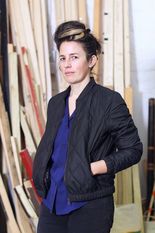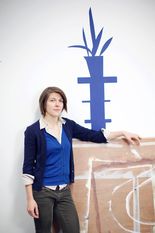Natural born artist Mariko Mori finds beauty in her surroundings
Mariko Mori speaks very slowly and deliberately, choosing her words carefully, always erring on the side of caution. If you ask her a question that she doesn’t have an immediate answer to, she won’t fob you off with a hurried or thoughtless response.
‘How would you describe your work?’ I pose early on in the interview. There is a pause of six seconds, then an ‘um’, then another pause of eight seconds (I’ve checked the Dictaphone… ) before she finally says, ‘What do you mean? No one word can define it, except I’m an artist.’
She isn’t being uncooperative. In fact, she is an unusually polite interviewee, but she doesn’t see the world the same way some of the rest of us do and you realise that early on.
As an artist, she is inspired by nature – she says ‘nayt-chaa’ in her soft Japanese accent over and over throughout the interview – and, for her most recent exhibition in London, Rebirth at the Royal Academy earlier this year, this ethereal woman did something quite remarkable with nature by harnessing it to create modern light sculptures.
The exhibition’s trophy work, Tom Na H-iu II, was a piece made of glass and stone and LED, which lit up according to data received from a neutrino detective system in Japan. Neutrinos, for those of you who don’t know, are subatomic particles that exist in the atmosphere, much like electrons but without the electric charge. Other pieces in the Rebirth exhibition – ‘The title Rebirth represents the circles in nature so life and death and rebirth and continuity. So each work in that exhibition connected to the concept of rebirth in nature,’ she says – represented prehistoric stone circles and the soul. No wonder she finds it hard to define her work in one word.
She began her career in London, having moved here from Tokyo, where she was born in 1967, to study at the Chelsea College of Art in the late 1980s. ‘I was very much interested in leading contemporary art rather than traditional art like painting and sculpture and it seemed to me that London was a leading city for installation art at the time,’ she explains. ‘I felt that there was an environment to nurture and support artists, there was respect and freedom for artists and that wasn’t in my home country at the time.’
After four years in London, she moved to New York to pursue a postgraduate education at the Whitney Museum of American Art. Her early work comprised photography and video but she began to explore other media quickly.
‘I started with visual art but then I started using performance and now my main focus is on site-specific installations,’ she says. She set up the not-for-profit Faou Foundation in 2010 to create ‘installations around the world, each of which will provide lasting testimony to the natural beauty of its surroundings’ and she now mainly works in large-scale sculpture.
Mori adores New York, where she has been based for the past 20 years – ‘There is unlimited opportunity you can create for yourself and I love the absolute freedom and the flexibility’ – but she will be moving to London later this summer to be closer to her producers and collaborators.
You sense though with Mariko Mori that nothing is ever permanent. She inhabits the world, the universe, not just a city or a town like mere mortals. She’ll forever be everywhere, spreading her unique vision throughout the globe and reinforcing that important doctrine of hers: ‘I believe it is so important to protect nature and to preserve it for future generations. It’s really our most important to task, to inherit this nature and pass it on.’

















